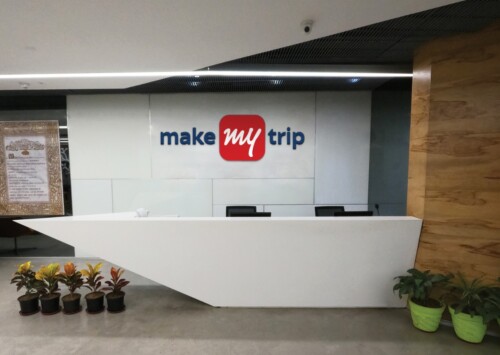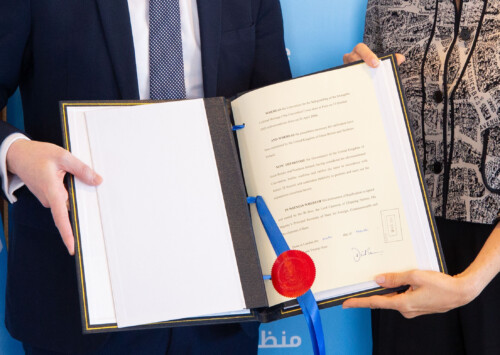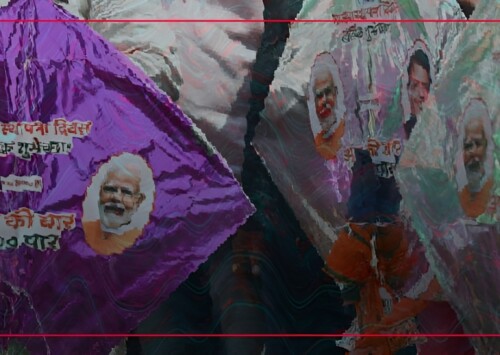Bandhani: Class Never Goes out of Fashion
Biz@India
January-February 2017
The bandhani fabric, an ancient tie-and-dye technique indigenous to the western Indian state of Gujarat and certain communities in neighbouring Rajasthan, holds a special place in the rich Indian textile industry. With evolving technology and growing investments, bandhani stands at the cusp of global glory.
With large manufacturing units mostly located in Ahmedabad, Surat, Vadodara and Kutch, Gujarat has a vibrant textile sector. Reports from EMIS peg the number of textile units at around 1,500, for both medium and large units, with 18 textile-related product clusters. In the textile sector alone, Gujarat reported a total of 105,463 Micro, Small and Medium Enterprises (MSMEs), from 2006-2015, as stated by the Industries Commissionerate of the Government of Gujarat. A culturally significant part of these MSMEs is the ancient art of bandhani, which remains untapped as an industry but finds a space in changing tastes and trends of the international fashion industry. The Government of India as well as state policies in Gujarat, with the introduction of initiatives, hopes to incorporate this special fabric in the expanding textile sector in the country.
Sunny days for Indian textile sector
India is the world’s second largest exporter of textiles and clothing, as the ‘Make in India’ initiative approximates in its reports. The flexibility of 100 pc Foreign Direct Investment (FDI) in single brand retailing has also facilitated an increase in the entry of top global apparel brands in India. With an aggressive expansion in multi-brand apparel stores over the past decade, the potential for investment in the textile industry is wide, with opportunities mainly in the raw fabric and dye production as well as processing and packaging sectors. With a large skill set and growing Industrial Training Institutes, Gujarat’s potential has grown with time.
What is Bandhani?
Bandhani, an ancient Indian technique of tie-and-dye involves two stages, as the process would seem like, tying sections of a length of cloth (silk or cotton) and then dunking it into vats of colours. Its name is derived from the Sanskrit word bandhana, which literally translates to tying together.
The technique demands skill and incorporation of an intricate and colourful design. It can take about 15- 20 days to weave a cloth of 20 meters which is the maximum length a loom can accept. The woven fabric is then removed from the loom and polished with starch before it is sent in its final product form for sale.
Involvement and employment
With Kutch and Saurashtra being the main districts in Gujarat for the production of the fabric, there is an employment of more than 30,000 persons in the region. The craft of making bandhani has become a major source of employment for the residents of Jamnagar particularly.
The centres of bandhani fabrics in Gujarat are mainly in Jamnagar and Ahmedabad, while in Rajasthan, they are found mostly in Bikaner, Jaipur, Jodhpur, Barmer, Pali, Udaipur and Nathdwara. “The producers of the fabric are usually dependent on dealers from Jamnagar, Rajkot and Ahmedabad. Because of the skills in Kutch, the dealers send agents to deliver cloth, with designs already marked out, and thread to the artisans of the area to carry out the tying process,” states Vibodh Shah, head for the company Mahavir Bandhani. Mahavir Bandhani has been in business for over a century, and explains that workers are paid according to a measure of kadi or four knots. “In an eight-hour working day, a worker completes up to 800 kadi on silk or 1200 on cotton. The finest sarees may take up to 12 days to knot,” states Vibodh.
Local initiatives
Communities in and around Gujarat and Rajasthan are involved in making bandhani, and there are attempts at sustaining this indigenous craft through independent and small efforts. Serving as bridges and resource providers to the locals, organisations realise sales and potential markets for them. Dastakar, a not-for-profit NGO established in 1981, works to support traditional Indian craftspeople and runs a few initiatives to sustain the fabric, along with other projects for keeping alive local crafts of block printing, quilting, toy making and soft furnishings, among many others.
A project by Dastkar, titled ‘Ranthambore’, deals in many crafts including bandhani. The organisation had a total turnover of around EUR 250,000 with around 350 women artisans involved for all crafts. “At present, the project is self-sustaining, but initially it received funding from the Ranthambhore Foundation, who initially invited us to work in the area, ICCO, NORAD and a Government of India Craft Development Centre scheme. Investment in the form of financial support and further skills training would enable the project to grow. And, livelihoods programme marketing platforms need to be built,” states Laila Tyabji, Chairperson of Dastkar.
Skilling as future
Introduction of skilling programmes also plays a part in promoting and preserving the craft. “When we started working in Ranthambhore, the women worked in the fields or as herders with no existing craft skills. We became a catalyst for earning and empowerment, and with 25 years of the project, all kinds of skilling have been shared, from tailoring and quilting to professional laundering and finishing. Every new skill leads to further growth, and the journey is far from over,” Tyabji shares. DISHA, a project by Dastkar, based in Rajasthan, promotes bandhani, through skills training and provision fabric and dying facilities. Fulfilling orders from France, Germany, the UK and Australia, DISHA is among the private initiatives that sustain the indigenous culture.
Sustainability in modern times
Bandhani, despite being a fabric that follows an old technique, has evolved in certain aspects to fit with changing tastes. Mahavir Bandhani states that initially six to seven colours limited to traditional designs was the norm, which has changed over the years. “We have included production of dress-materials, chaniya-choli and shirts with bandhani design. With the help of professional designers and dyeing masters, the quality of our bandhani production has improved immensely, and the fabric continues to gather fame over the world,” states Vibodh from Mahavir Bandhani.
Even as some locals are not extremely enthusiastic about learning the craft, the art product is slowly gaining popularity across India and abroad. Dewangi Marthak, who runs Jagdish Cotton World, a retail outlet in Rajkot, explains, “The colourful and bright bandhanis are hot-selling, as people know about it more than other textile arts. Especially during December, foreigners pour into our shop to buy traditional silks and cottons. People from Japan, Europe, the US, the UK all show interest.”
Government involvement
The government of Gujarat intends to invest close to EUR 3.16 billion in the textile industry by 2020, as per government reports. With an emphasis on handicrafts and rural industries through introduction of schemes and initiatives, the government of Gujarat is looking to improve the situation. The recent Cottage and Rural Industries Policy 2016 Initiatives list by the government of Gujarat lays out a plan, with specific policies on design development support, new emphasis on crafts tourism and infrastructure, technology and innovation development. Offering credit support options and specialised incentives for women, the government hopes to open up Gujarat to the country and the world to a brighter future of production and investment in rural handicrafts.
With the Indian government’s Skill India and Make in India initiatives, as well as opening up FDI for growth in general, the textile sector in Gujarat is bound to see a push. As the traditional bandhani has sustained over the years, there is a big opportunity for it to grow even bigger in the coming years.










